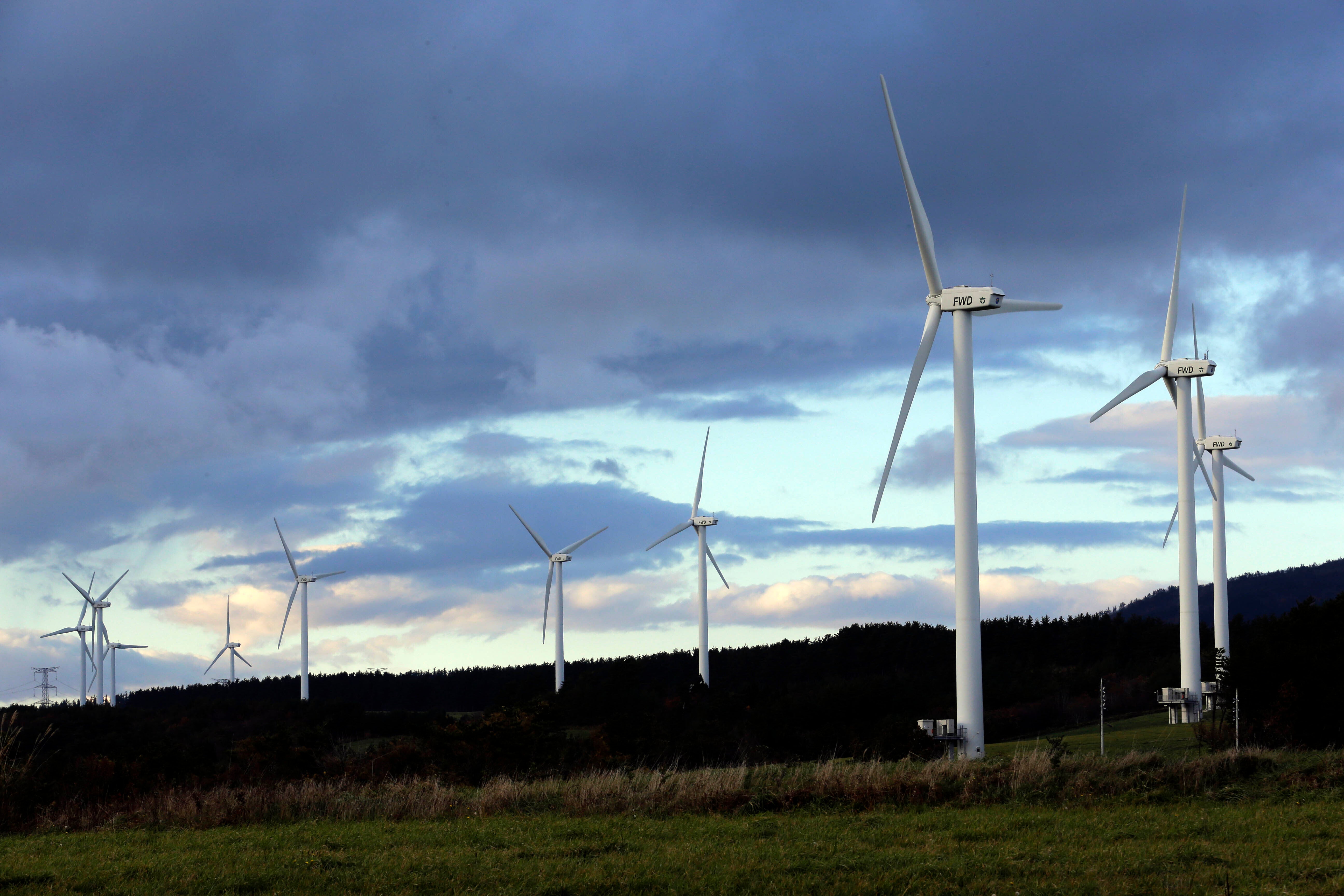Japan OKs plan to push clean energy, nuclear to cut carbon
Japan has adopted a new energy policy that promotes nuclear and renewables as sources of clean energy to achieve the country’s pledge of reaching carbon neutrality by 2050

Your support helps us to tell the story
From reproductive rights to climate change to Big Tech, The Independent is on the ground when the story is developing. Whether it's investigating the financials of Elon Musk's pro-Trump PAC or producing our latest documentary, 'The A Word', which shines a light on the American women fighting for reproductive rights, we know how important it is to parse out the facts from the messaging.
At such a critical moment in US history, we need reporters on the ground. Your donation allows us to keep sending journalists to speak to both sides of the story.
The Independent is trusted by Americans across the entire political spectrum. And unlike many other quality news outlets, we choose not to lock Americans out of our reporting and analysis with paywalls. We believe quality journalism should be available to everyone, paid for by those who can afford it.
Your support makes all the difference.Japan adopted a new energy policy on Friday that promotes nuclear and renewables as sources of clean energy to achieve the country’s pledge of reaching carbon neutrality in 2050.
The new basic energy plan, adopted by the Cabinet just in time for the climate summit in early November, calls for drastically increasing use of renewable energy to cut fossil fuel consumption over the next decade as Japan pushes to meet its ambitious emissions reduction target.
Japan has been undecided over what to do about its nuclear power industry since the 2011 Fukushima plant disaster. It now says reactor restarts are key to meeting emissions targets as Japan tries to step up in the global effort against climate change.
The 128-page plan compiled by the Ministry of Economy, Trade and Industry says Japan should set ambitious targets for hydrogen and ammonia energy, carbon recycling and nuclear energy. It also calls for promoting offshore wind power and use of rechargeable batteries that have potential for growth.
“We will mobilize all options” to achieve the emissions target, the plan said, adding that the “supply of stable and low-cost energy is a prerequisite.”
The changes in the plan are meant to achieve the carbon emissions reduction target announced in April by former Prime Minister Yoshihide Suga. His successor, Fumio Kishida, a backer of nuclear plant restarts, took office this month.
Japan has pledged to reduce its emissions by 46% from 2013 levels, up from an earlier target of 26%, to achieve carbon neutrality by 2050. Japan says it would try to push the reduction as high as 50% to be in line with the European Union s commitment. China has pledged to be carbon neutral by 2060.
The energy plan says renewables should account for 36-38% of the power supply in 2030, up from the current target of 22-24%, and that newly introduced fuels such as hydrogen and ammonia should comprise 1%.
The target for fossil fuel use was slashed to 41% in 2030 from 56%. The plan said Japan will reduce dependence on fossil fuel without setting a timeline. It said Japan will abide by a Group of Seven pledge earlier this year to stop providing overseas assistance for coal-fired generation projects that lack emissions reduction measures.
The 2050 emissions-free target has prompted calls to expedite restarts of nuclear plants. Progress toward reducing Japan’s reliance on fossil fuels has been hindered by the prolonged closure of most of its nuclear plants after the Fukushima disaster in 2011.
The plan keeps the target for nuclear power unchanged at 20-22%. Japan says it aims to reduce its reliance on nuclear power as much as possible but that nuclear will remain an important energy source. Experts say a phase out is unlikely anytime soon.
Economy and industry minister Koichi Hagiuda has said “drastic energy conservation, maximum promotion of renewables and safe restarts of nuclear reactors” are key.
Japan will continue its nuclear fuel reprocessing cycle, in which spent nuclear fuel is converted to plutonium, despite the failure of its Monju plutonium-burning reactor and international concerns over safeguards for its plutonium stockpile.
A government taskforce will “accelerate” restarts of reactors, which have been slowed by stricter safety standards set after the Fukushima meltdowns, the plan says.
It did not mention the possibility of new reactors, despite such calls from some industry officials and pro-nuclear lawmakers. Japan is pursuing research and development of small modular reactors, or SMRs, considered a clean, affordable and safer nuclear power options in the future.
The atomic energy target will be difficult to achieve because of persistent anti-nuclear sentiment among the public and more time-consuming safety checks by the authorities. The energy plan gave no numerical targets, but experts say the 20-22% target would require restarts of about 30 reactors.
Twenty-four of Japan’s 54 workable reactors were assigned to be decommissioned after the Fukushima disaster, as utility companies opted to scrap old reactors rather than invest heavily in added safety measures required under stricter post-Fukushima standards. Only 10 reactors have restarted over the past decade.